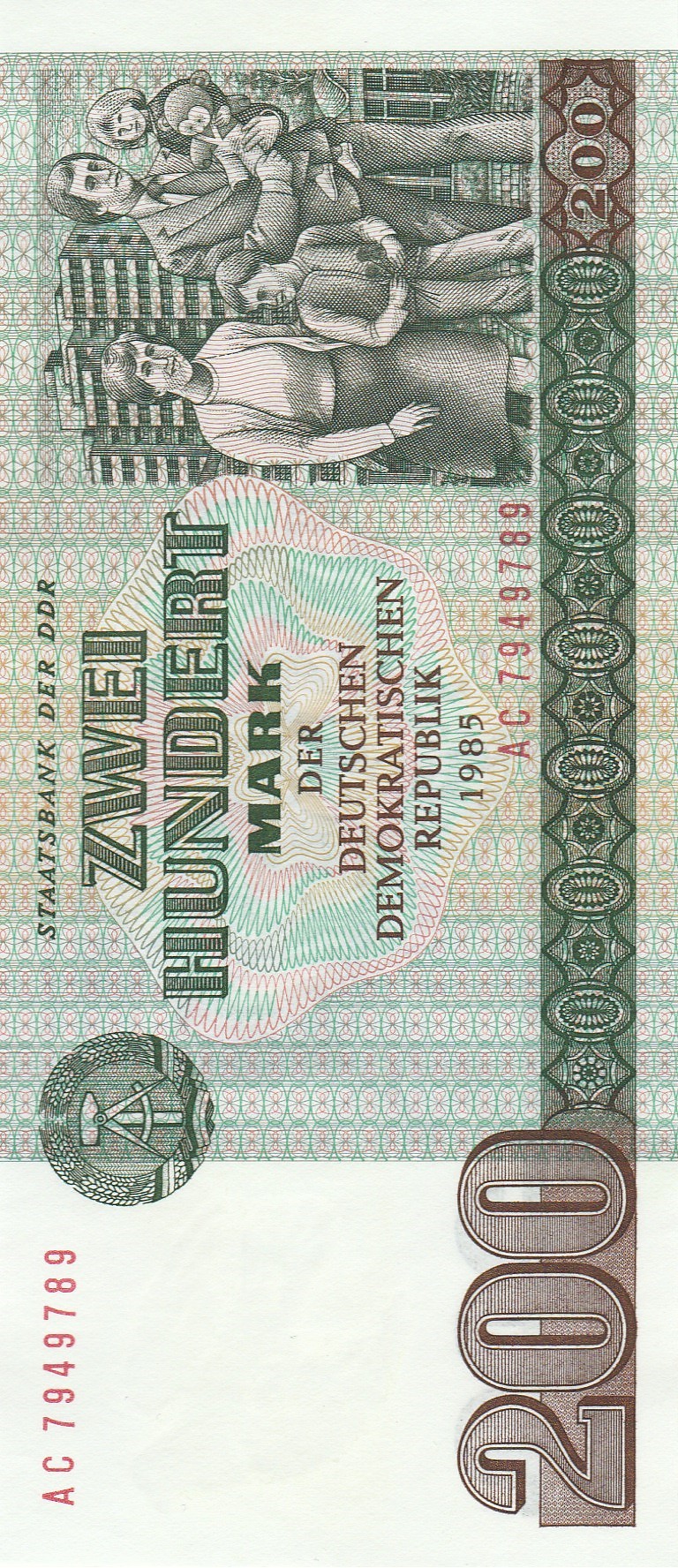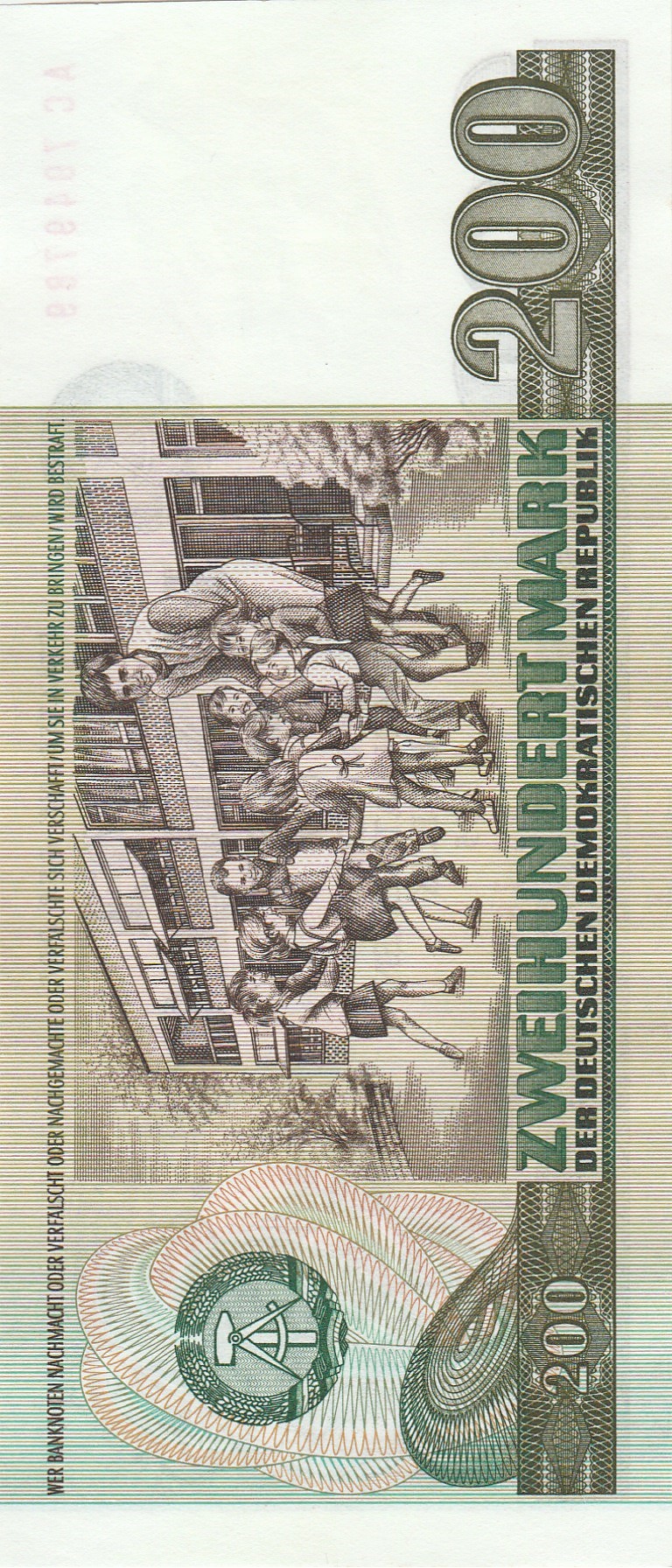200 and 500 East German Marks
The strange story of the unissued 200 and 500 East German Marks, Aug, 2021
When reading up on bitcoin and trying to understand its value, one of the arguments you are likely to come across is the set supply (6.25 newly created bitcoins per block added, roughly every 10 mins with an ultimate supply of 21 million). This is given as an argument against fiat money which can be printed on demand (although the same argument can be said for the thousands of crypto currencies that exist). Governments tend to set inflation at 2% a year, so over a 10 year period if you kept your cash under a mattress it would purchase 20% less. But throughout history periods of high inflation or hyperinflation have occurred where ordinary people have seen their savings and pensions plummet. The most well know is perhaps the hyperinflation in Weimar Germany where all the money in circulation in 1922 wouldn't have been enough to by a bus ticket or a newspaper in 1923. So in my research I began looking on eBay for hyperinflation notes and in the words of Weird Al on his eBay parody song "the kind of crap you'd throw away, I'll buy on eBay" I began purchasing some. In my search I came across someone selling East German notes and found the kind of eBay sellers dream story, finding a cave of supposedly worthless trash that you could make a killing on.
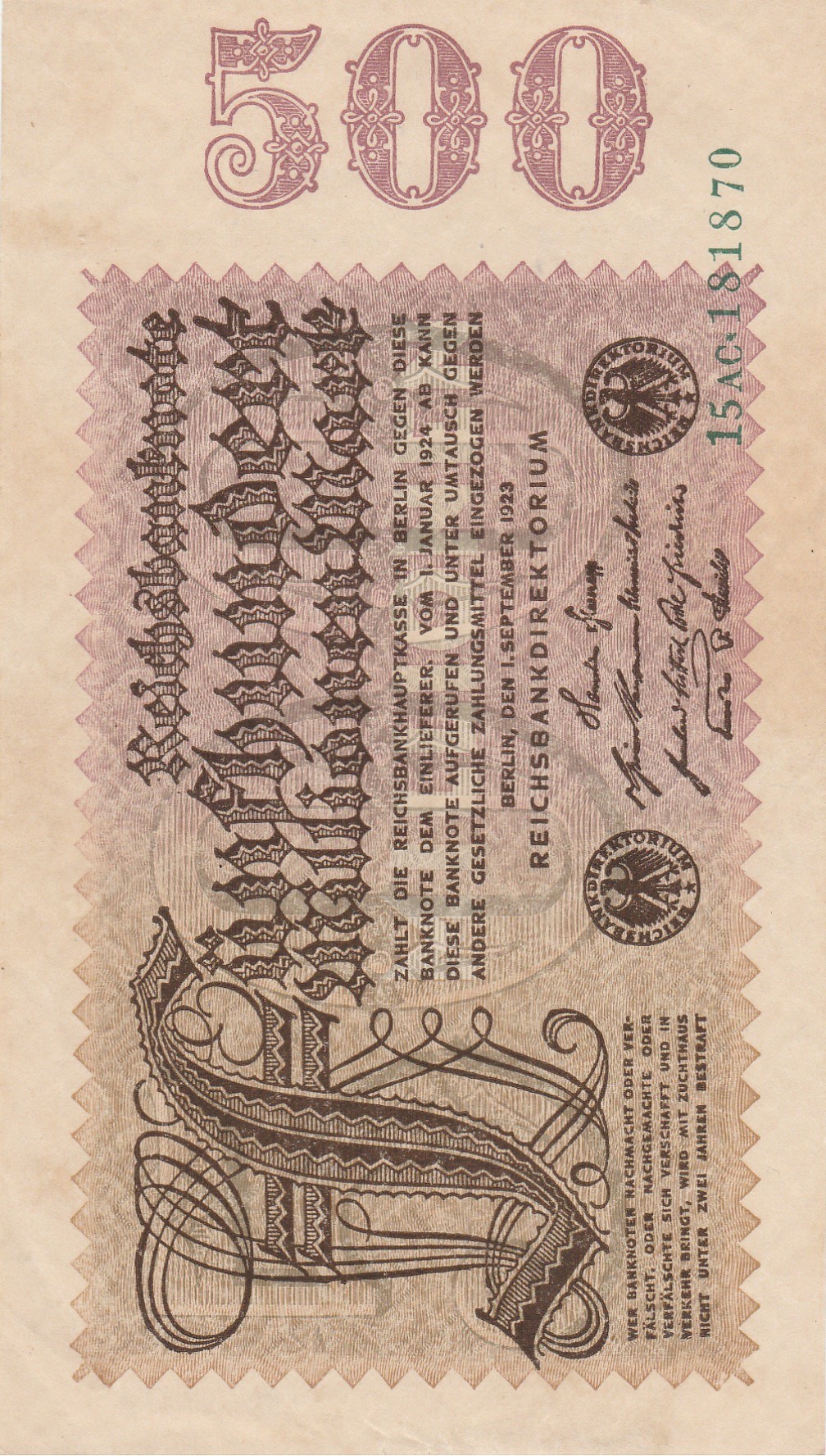
If you look on eBay you can find plenty of listings for East German marks in denominations of 200 and 500. The notes had been printed by the GDR in 1971 and 1984 but never issued or put into circulation. The highest note in circulation at the end of the GDR being the 100 mark note. Exactly why these notes were printed but never issued is not clear. Perhaps the denomination was too high and would lead to inflation (the average monthly salary in 1985 being 1,130 Marks, the 500 note would have been 44% of a worker's monthly income) or perhaps the notes were held in preparation of the cold war turning hot. So how then in the early 2000s did these notes, having never been issued, begin appearing on mass on eBay.
| Timeline of the end of the GDR | ||
|---|---|---|
| August 1989 | A peace demonstration, the Pan-European Picnic, was held on the border between Austria and Hungary. Organised by the Paneuropean union, and members of the Hungarian government. The idea was to open the border to test how the Soviet Union would react. Several hundred East Germans crossed the border unhindered, the largest mass exodus since the Berlin Wall was built in 1961. | |
| Sept 1989 | The Hungarian border was opened . 30,000 East German citizens had fled to West Germany before the GDR denied travel to Hungary. | |
| 9th Nov 1989 | After a period of peaceful protests known as the Peaceful Revolution the border with west Germany is opened | |
| 18th of March 1990 | First free elections in the GDR took place | |
| 1st of July 1990 | The two Germanys entered a currency union with East German marks exchanged on a 1:1 basis with the Deutsche Mark | |
| 3rd of Oct 1990 | Unification of Germany | |
The story begins with the agreed currency union on the 1st of July 1990. All East Germans had 6 days in which to deposit all East German Marks into their bank accounts in order for them to be converted into west German Deutschmarks. Any money discovered after, would no longer be converted and would therefore be worthless. The rate of exchange was to be 1:1 (conditions below), a very generous rate and seen by some as a giant subsidy for the East with paychecks, rents and retirements converted at 1:1 ratio.
| Ratio | Condition | |
|---|---|---|
| 1:1 | Up to a limit of 4,000 per person, 2000 for children under 14 and 6000 for those over 60. | |
| 2:1 | Larger amounts of savings, company debts and housing loans | |
| 3:1 | 'Speculative money', or money acquired before the unification |
What the actual value of the East German Mark should have been is difficult to gauge as outside of the GDR it was practically worthless. In the GDR the government set the rate of exchange at parity with the West German Mark. Importing or exporting East German marks in or out of the GDR was forbidden, and penalties for violation ranged from confiscation of smuggled currency to imprisonment. However in West Berlin exchanges existed where the price would vary from about 5 to 10 East German marks to 1 Deutsche Mark. Any tourists visiting the GDR from the west would have had to exchange their currency at the official rate and would be required to exchange a minimum amount for each day for the duration of their stay. In 1980 this was set to 25 Marks.
What happened to all the cash
According to Kreditanstalt für Wiederaufbau (KfW), a government-owned development bank in the runup to the monetary union, 620 million notes with a value of 17.8 billion marks were deposited for exchange. In total, 431 billion East German marks were exchanged for the West mark, 62 billion of that at a 1:1 exchange rate, the rest at the higher 2:1 ratio.
The banks would have been filled with all this cash and needing to free space quickly in order to take delivery of the new Deutschmark. The coins being made of mostly aluminium had some value. These were simply melted down right away for their metal (In total 640 million marks weighing 450,000 tons). But the East German Staatsbank were left with all these now worthless notes and under pressure to clear the vaults. Their solution was to bury the cash in secret in an underground complex near Halberstadt in rural Saxony-Anhalt known as Komplexlager 12 .
The complex had originally been built during world war two with work beginning in April 1944. By the end of the War some 13Km of tunnels had been dug for use as a factory producing turbine parts for Junkers aircraft. The East German Army took over the Tunnels and extensively enlarged them by some 7Km and remodelled them to form Komplexlager 12, or Forward Supply base 12 in the early 1980s. The tunnels were then stocked with 5500 tons of ammunition and 3500 tons of clothes and equipment. The tunnels were supplied by train and the ammo moved around by electric forklift trucks and tractors. The whole inventory of the bunker could be distributed to the front line in the event of an east/west war in 24 hours thanks to the loading dock which was 960m long and the 120 electric forklift trucks available in the depot.
See further details and pictures of Komplexlager 12 here: https://www.thetimechamber.co.uk/beta/sites/military/continental-military/halberstadt-komplexlager-12-bunker
In an interview on welt.de the last commander of the bunker Hans-Joachim Büttner describes the process:
“The first money was the GDR's emergency reserve, that came by train. It drove to the ramp completely underground and was unloaded. Then Tatra semi-trailers rolled up. The wooden pallets with the money bags were fetched from the truck loading areas with forklifts and transported by hand onto 20 conveyor belts. There were always bankers there, for control."
The money was stored in two places in the tunnel, one half of which the National People's Army (NVA) had been using as an ammunition store since 1975. A piece of old tunnel from 1945 was also used. The sacks were stacked just below the nine-meter-high, vaulted ceiling.
The idea was that the humidity in the tunnel would lead to the rotting of the paper in a short period. Büttner says: “We knew it would never work. " he added that “They drilled holes in the ceilings from above and poured water and sand in, that was probably intended to cover the money and so that it should rot better."
Money arrived for over a year and a half according to Büttner . The money was dumped into the caves which were then closed off with concrete.
This should have been the end of the story but sometime around the millennium a lot of notes which should have been quite rare began appearing at coin shows. Just how rare the notes were I'm not sure, on one blog it stated that the 500 note was ultra-rare and on another forum a user had posted that a lot of notes had already been sold by Busso Peus (dealer/auction house) in several auctions on behalf of the KfW, between 1995 and 2000. (Cited from: https://www.cointalk.com/threads/east-german-ddr-banknotes.91451/). The notes also began appearing on eBay around the same time, and in July 2001, police in Germany arrested two men exiting the caves with backpacks stuffed with cash. The story of the thieves and their break in vary, but somehow two men in their 20s from the nearby town had managed to burrow into the complex and it was suggested they had crawled through a ventilation shaft to access the cave in which the notes were kept. Just how much they'd managed to get out before getting caught is unknown.
In early 2002, the caves were opened up again and the remaining 3,000 tons of cash were sent by 298 truckloads to the incinerator to be burned along with household rubbish. You can see a video of the reopening of the cave and incineration of the cash at: East German Bank Notes Stock Footage
Staatsbank der DDR - 500 mark banknote
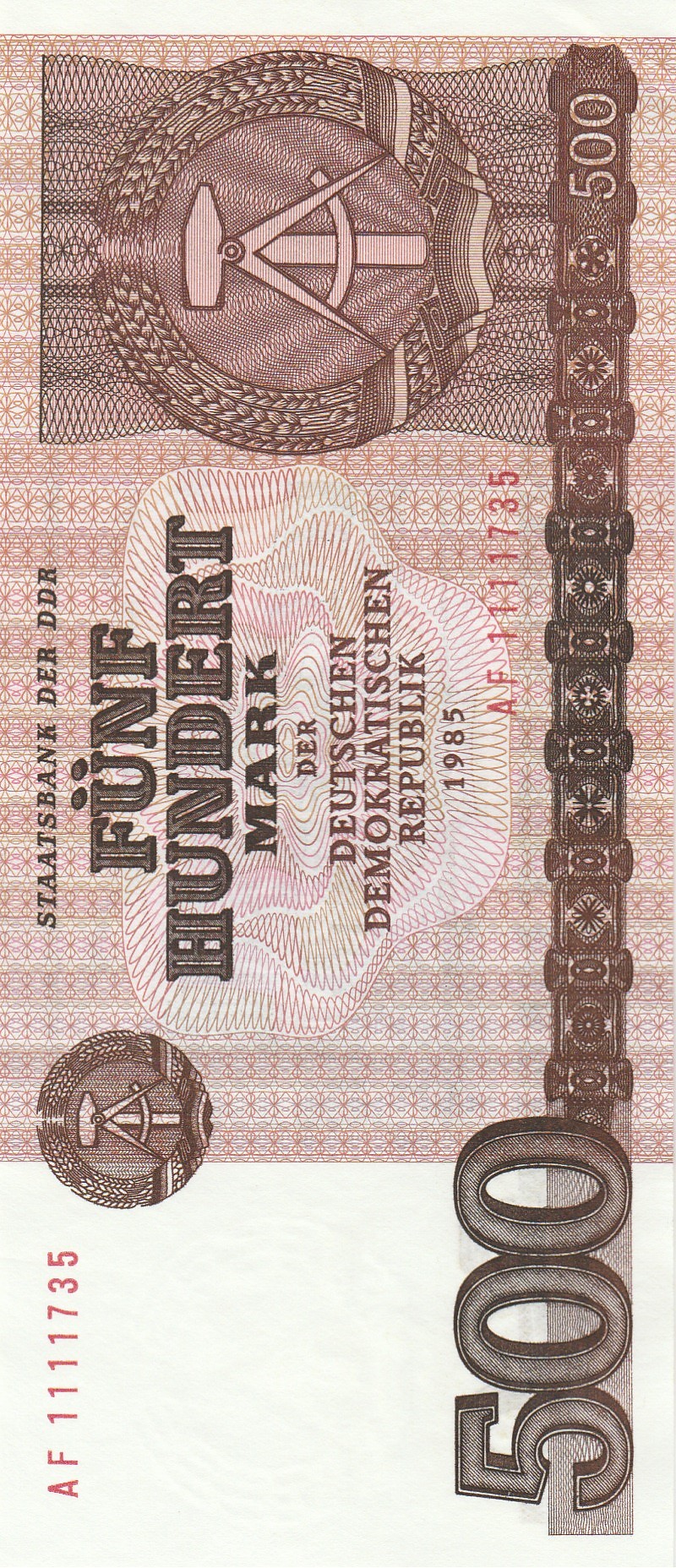
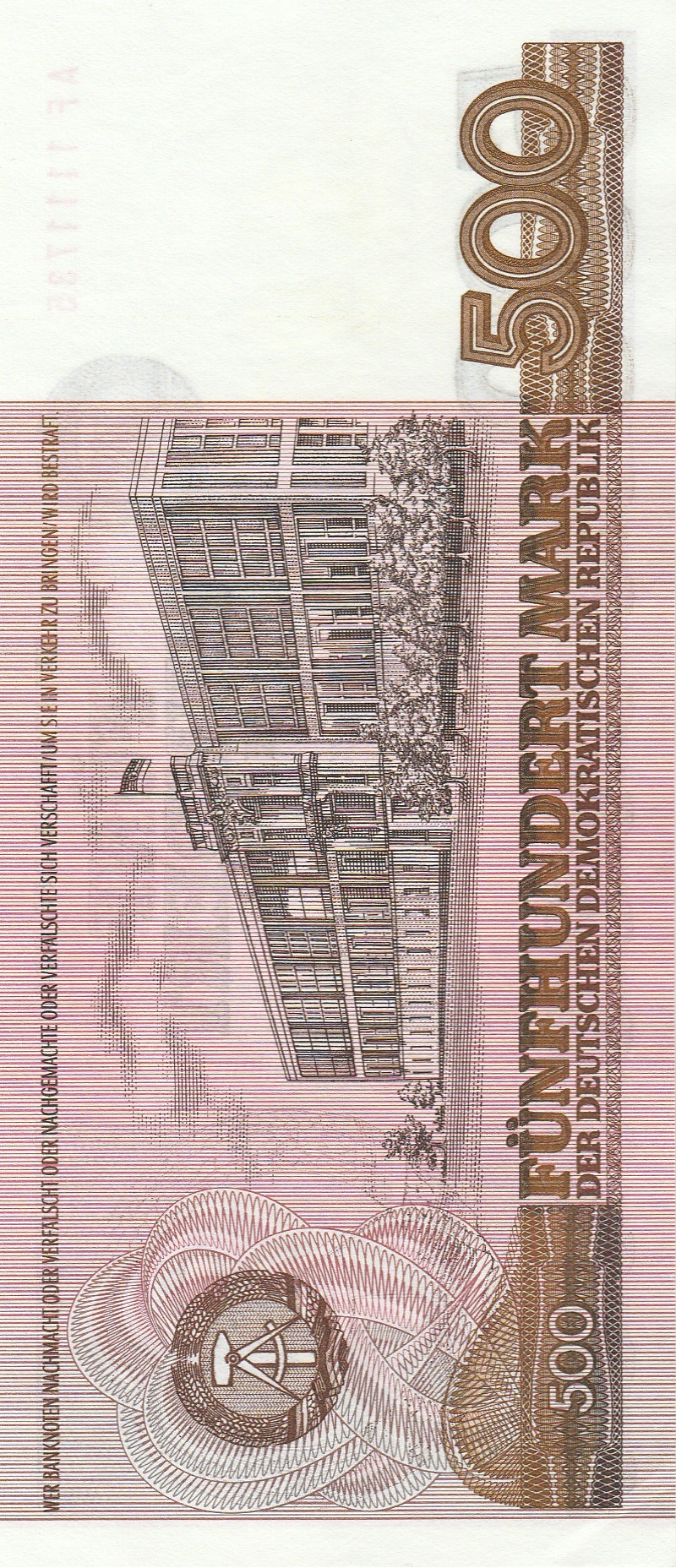
Staatsbank der DDR - 200 mark banknote
